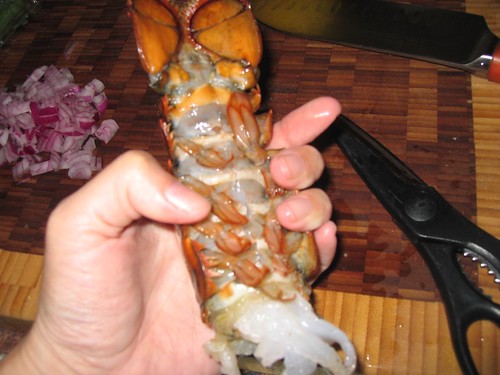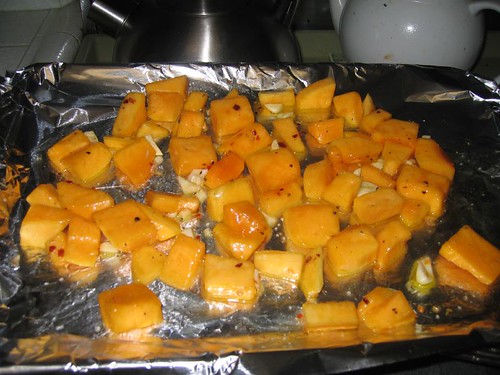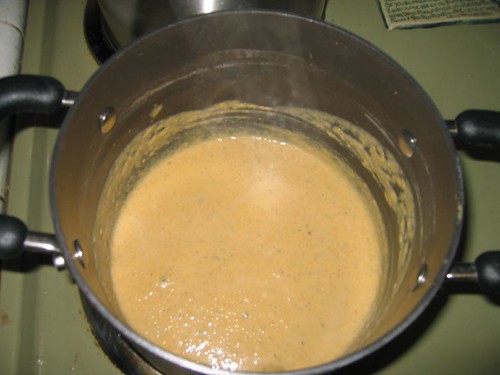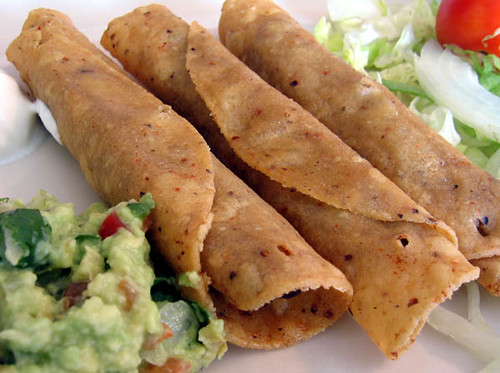
INGREDIENTS
- 1 large red bell pepper, roasted and peeled (if you don't want to roast your own red pepper, you can use jarred roasted red peppers)
- Chicken broth
- About 1/4 cup your favorite marinara sauce
- 1/2 teaspoon of finely minced Serrano pepper or poblano pepper
- 1 large garlic clove, finely chopped
- 1 generous pinch of curry powder (optional)
- Unsalted butter
- Heavy cream
- 5 asparagus spears, cut into 1" pieces
- A few basil leaves torn
- 3/4 cup dry white wine
- 1 large or 2 small fresh lobster tails
- About 1/4 cup red onion, finely sliced
- 1/2 lb Linguine pasta
- Add the roasted red pepper to your blender. Add about 1/4 cup of chicken broth, and 1/4 cup of the marinara sauce. Puree until smooth, about 1 minute. Taste for seasoning, and add salt, if necessary and puree a few seconds more. Set aside.
- With kitchen sheers, cut a slit in the underside of the tail. Remove the meat, using a fork if necessary. Pull the meat from the wide end to the tail tip.

- Heat 1 teaspoon olive oil in a large, heavy sauté pan over medium-high heat. Add the lobster tails and sauté until done, about 5 minutes, turning a couple times to cook evenly. Sprinkle with salt and pepper. Remove from heat and chop the tails into 1/2" pieces. Set aside.
- In the same pan, add the Serrano pepper, onion, garlic, curry powder, if using, and a pat of butter. Cook for about 3 minutes, until soft and tender and fragrant.
- Add the white wine and let this cook out thoroughly, about 5 minutes more. Add the roasted red pepper puree and cook a few more minutes. In the meantime, start to boil water in a large pot. Cook your linguine until al dente.
- Add a few splashes of cream to the roasted red pepper sauce, and bring it to a simmer (I think I added about 1/3 cup of heavy cream), and the asparagus spears.
 Cook 2 more minutes then add the cooked lobster pieces and torn basil leaves, and remove the sauce from the heat so that the lobster doesn't overcook.
Cook 2 more minutes then add the cooked lobster pieces and torn basil leaves, and remove the sauce from the heat so that the lobster doesn't overcook.
- Drain the pasta and place on a serving platter. Pour the sauce over the pasta and serve with freshly grated Parmesan cheese.





